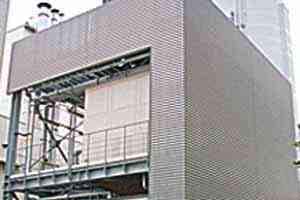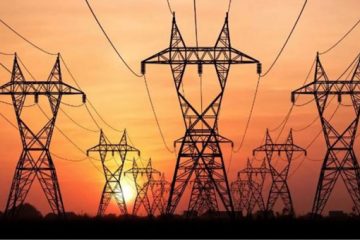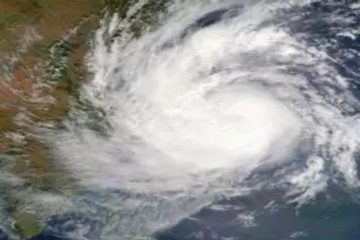 As frequent power outages and government inability to increase electricity production have gripped mass psyche, one element is, perhaps, eluding all eyes. That is delay in adoption of a digital power monitoring system is costing the country hard, which could have otherwise saved up to 500 Mw every day. Power generation, on a daily basis, now stands at between 4,000-4,500Mw. In the absence of an advanced monitoring system, power theft, without paying proper premiums on current rates, has become a common occurrence. Power company employees, themselves, are involved in malpractices like signing on installation papers with lower load values, while actually offering double or more power loads, by taking bribes.
As frequent power outages and government inability to increase electricity production have gripped mass psyche, one element is, perhaps, eluding all eyes. That is delay in adoption of a digital power monitoring system is costing the country hard, which could have otherwise saved up to 500 Mw every day. Power generation, on a daily basis, now stands at between 4,000-4,500Mw. In the absence of an advanced monitoring system, power theft, without paying proper premiums on current rates, has become a common occurrence. Power company employees, themselves, are involved in malpractices like signing on installation papers with lower load values, while actually offering double or more power loads, by taking bribes.
Experts have long been saying that a digital microgrid system, using smart meters, could quantify the exact reading going through the power lines, thus illegal links could be located and stopped, but no step has been taken in this regard. A digital microgrid system would regulate the current zones better, reduce effects of power cuts and provide stability to the power sector, said Sanwar A Sunny, a Bangladeshi expatriate who has worked as an associate project manager at the renewable energy office of the US department of energy.
The smart digital grid system, explained Sunny, who founded the Bangladesh Green Building Council (BGBC), is a digital microgridding procedure, divides power distribution zones into residential and commercial zones. So the entire zone does not lose power during a power cut, Sunny said, adding that the zone, itself, should use mixed land usage and better urban planning.
He said the current power lines incur losses in transmission, as they are not microgrids, the circuit breakers at grid coordinates are not enough to make the grids smaller and manageable. “This is why, if one of the sections have a faulty operation, a larger area faces to a black-out”, he said, adding that a smart grid with small, relatively cheap, locally made radio transmitters, operating remotely in unlicensed radio bands, using two-way real-time communication technology could change the scenario.
It could transmit coded instructions from the central board (electricity offices) to the circuit breakers in selected coordinates of the microgrid sub-stations and could maintain multiple power flow lines with automated control and digital metering, he added.
“The individual grids could themselves be resource efficient, with their own waste management and generation capabilities and reduced need for transportation”, he opined.
Sunny said that feed-in tariffs (FIT) would also be possible, as the energy usage could be monitored remotely and private power generation and energy efficient entities could be offered rebates and incentives. “This will also expedite investments in this sector, create job opportunities for engineering graduates and technicians, and ease pressures on the government”, he added.
Dr Saiful Haque, president of Bangladesh Solar Energy Society and professor of the Renewable Energy Institute (REI) at Dhaka University (DU), said that digital microgrid could integrate renewable energy and private power generation, monitoring how much power is produced and used.
There are many off-the-shelf and customised ways of adding supply from private power and renewable energy generation sources, into the grid, he said, adding that various private companies have been designing such solutions, but policy problems, rather than technological limitations, have been hindering their implementation in the country.
Siddique Zobair, senior consultant of Deutsche Gesellschaft für Internationale Zusammenarbeit (GIZ), the German government-run agency for technical cooperation for sustainable development, told The Independent that incorporating smart grid systems, with renewable energy generation, would be a good step towards reducing system loss. GIZ is currently working as consultant, on renewable energy sector, to the power division of the ministry of power.
“But the problem is, apart from theft from the power-grid, more than 12 per cent of daily output (about 600Mw) is lost due to old transmission lines. If the lines aren’t changed, then only the smart grid system cannot curb system loss”, he said. About FIT for smart grids with renewable energy, Zobair said the concept should be made clear to the public, before the government implements it. “FIT is the preferential rate paid for electricity fed back into the national grid, from a renewable energy generator,” he said, adding that more than 64 countries adopted FIT, in an effort to find a solution to power crises.
“Even India has a feed-in tariff policy these days. Under their policy, a solar-system installer can sell electricity to the national grid at a slightly higher price. This encourages urban dwellers to install solar energy generation systems and feed the extra electricity to the grid lines”, he said. But, for better monitoring of the entire process, smart microgrid systems have to be installed.
Taposh Kumar Roy, additional secretary of ministry of power, power division, told The Independent that the government still has not decided anything about installing smart microgrid systems, to curb power loss.
Courtesy of The Independent






